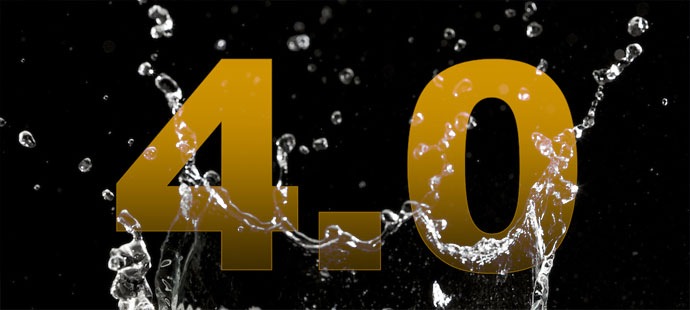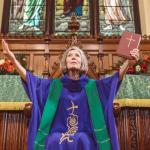On one level, that New York Times feature story on the fall of Msgr. Kevn Wallin of Connecticut has everything one would want in a religion scandal. I mean, it’s got sex, crystal meth, Broadway show tunes and a hazy link to a future cardinal.
Consider this summary material:
At a time when priests from California to Delaware have been accused of loathsome deeds, the allegations against Monsignor Wallin, the former pastor of the Cathedral of St. Augustine in Bridgeport, are of a notably different dimension: that he was a drug dealer and addict who was buying an adult novelty shop to launder ill-gotten proceeds, a priest who was cross-dressing and having sex with men.
The enigmatic double lives of Monsignor Wallin burst into public view last month after federal prosecutors announced they had arrested him on charges of possessing and conspiring to sell drugs that could send him to prison for life. Now 61, he languishes in jail, having pleaded not guilty to behavior that many who know him find both twisted and ungraspable.
Or how about this?
After his departure, church officials found a bag stowed in the rectory containing adult pornographic videos, sexual toys and leather masks, according to church workers.
Alarmed at the possibility of child pornography or child abuse, the diocese hired an outside lawyer. The diocese said Monsignor Wallin was questioned and denied interest in children. An expert searched his computer, but found nothing related to children.
The diocese decided it had a priest who had committed a sin but not a crime.
Anyway, I think that we will skip the part about the “lace panties and other articles of women’s clothing” in his laundry.
The journalistic question, for me, is this: What about the actual content of this talented clergyman’s faith and ministry? I mean, was he one of those priests who was silent on the church’s teachings? Was he a progressive who gently undercut the doctrines of the church? Was he a traditionalist to preached one thing, while secretly living a life that completely contradicted the doctrines he had vowed to defend? Was he high church or low church?
Readers don’t get much on that side of the equation, which is strange since many unnamed Catholic leaders — we are told — believed that this man was on his way to being a bishop.
I mean, we are told that he was “erudite” and that the faithful “felt buoyed by his homilies.” He apparently loved to talk about church history and to take people on pilgrimages of some kind or another (other than to the opera and Broadway shows). Then there was this interesting paragraph that combined both sides of his life in a mysterious and unexplained manner:
Monsignor Wallin’s fall seems precipitous. But colleagues said that his faith had been weakening for years under the imperatives of running a financially crippled church, and that he had long been sexually active with men. His drug use, they suspect, may have been more recent, and the final tinder that exploded his life.
And then there is this glimpse of spiritual issues:
“His lifestyle was go-go-go-go, doing 50 things at once,” said a businessman who knew him. “He loved to mix with the big shots.”
But there was evidence he was wrestling with his faith. A church worker who has known him for decades described a session with other priests years ago during which they spoke of things like the mercy of God, and Monsignor Wallin said, “You don’t really believe that, do you?”
“He had become disillusioned with the bureaucracy of the church,” this worker said. “You’re always doing the ceremony. You’re always dealing with the paperwork. You’re not shepherding souls.”
But the fact everyone agrees on was that, before the drugs, before his mental breakdown, there was always his double life in which he was violating his oath of celibacy. So whatever his approach to the Catholic faith, it was one in which his public, celebrated priesthood was mixed with his life as a sexually active homosexual and church officials close to him seemed to have known about that, according to the Times.
So there is a crucial question here, once again.
Other than matters of oratorical style, what was the content of this man’s faith and his ministry?
Did anyone ask about that? If and when did he actually lose his Christian, Catholic faith? To me that seems like a rather crucial question, yet it is never really addressed in this story.
Now, while it may seem like a bit of a leap, this Connecticut story connects rather easily to that alleged Vatican scandal that is lighting up the news in Italy.
The Daily Beast has offered an update, with the low-key, modest headline, “Priests in Panties.” While this story contains little new material, it does have some URLs to coverage of earlier, similar, scandals that certainly suggest that there is fire under this dingy smoke from inside the Vatican.
However, there was one reference in this piece that caught my attention, in this discussion of a lavender network of priests, repeat PRIESTS, inside the Vatican walls:
The priests, it seems, are allegedly being blackmailed by a network of male prostitutes who worked at a sauna in Rome’s Quarto Miglio district, a health spa in the city center, and a private residence once entrusted to a prominent archbishop. The evidence reportedly includes compromising photos and videos of the prelates — sometimes caught on film in drag, and, in some cases, caught “in the act.”
Revelations about the alleged network are the basis of a 300-page report supposedly delivered to Benedict on December 17 by cardinals Julian Herranz, Joseph Tomko, and Salvatore De Giorgi. According to the press reports, it was on that day that Benedict XVI decided once and for all to retire, after toying with the idea for months. He reportedly closed the dossier and locked it away in the pontifical apartment safe to be handed to his successor to deal with. According to reports originally printed by La Repubblica newspaper and the newsweekly Panorama (and followed up across the gamut of the Italian media), the crimes the cardinals uncovered involved breaking the commandments “Thou shalt not steal” and “Thou shalt not commit adultery,” the latter of which has been used in Vatican-speak to also refer to homosexual relations. …
Wait a minute. There were videos of “prelates”?
That would kick this particular scandal up to a completely different level, if this Vatican report offered details on a network of “prelates” rather than mere “priests.”
Meanwhile, I think it is crucial to note that Catholic writers on left and right are questioning whether this alleged report was in fact the last straw for an exhausted Pope Benedict XVI. This post by Phil Lawler over at the conservative CatholicCulture.org notes:
Is there a network of homosexual clerics working within the Vatican? Undoubtedly, Yes. Was the discovery of that network a major factor motivating Pope Benedict to resign? Undoubtedly, No. … In many more cases there have been rumors, unconfirmed reports, or circumstantial evidence pointing toward the existence of a gay faction.
Pope Benedict, who has lived in Rome and worked with the Roman Curia for more than 30 years, has surely heard the reports and the rumors. He cannot possibly have been shocked by the news that some Vatican officials are homosexual. “He is probably the last person who would be surprised by such a so-called revelation,” remarked Jean-Marie Guenois, another veteran Vatican journalist and editor of Le Figaro.”
In other words, it is hardly news that there are discussions of homosexuality and the Catholic priesthood. However, Catholic leaders on left and right stress that there are gay priests as well as straight who faithfully live out their vows and manage to wrestle with the implications of the church’s doctrines — all of them — while defending her ancient teachings and traditions.
Whether in Connecticut or even in Vatican City, at some point journalists have to ask questions about what clergy, high and low, believe and how they live out those beliefs. The real scandals are linked to the failure to believe the faith, to teach it and to live it out. So dig deeper, folks.











